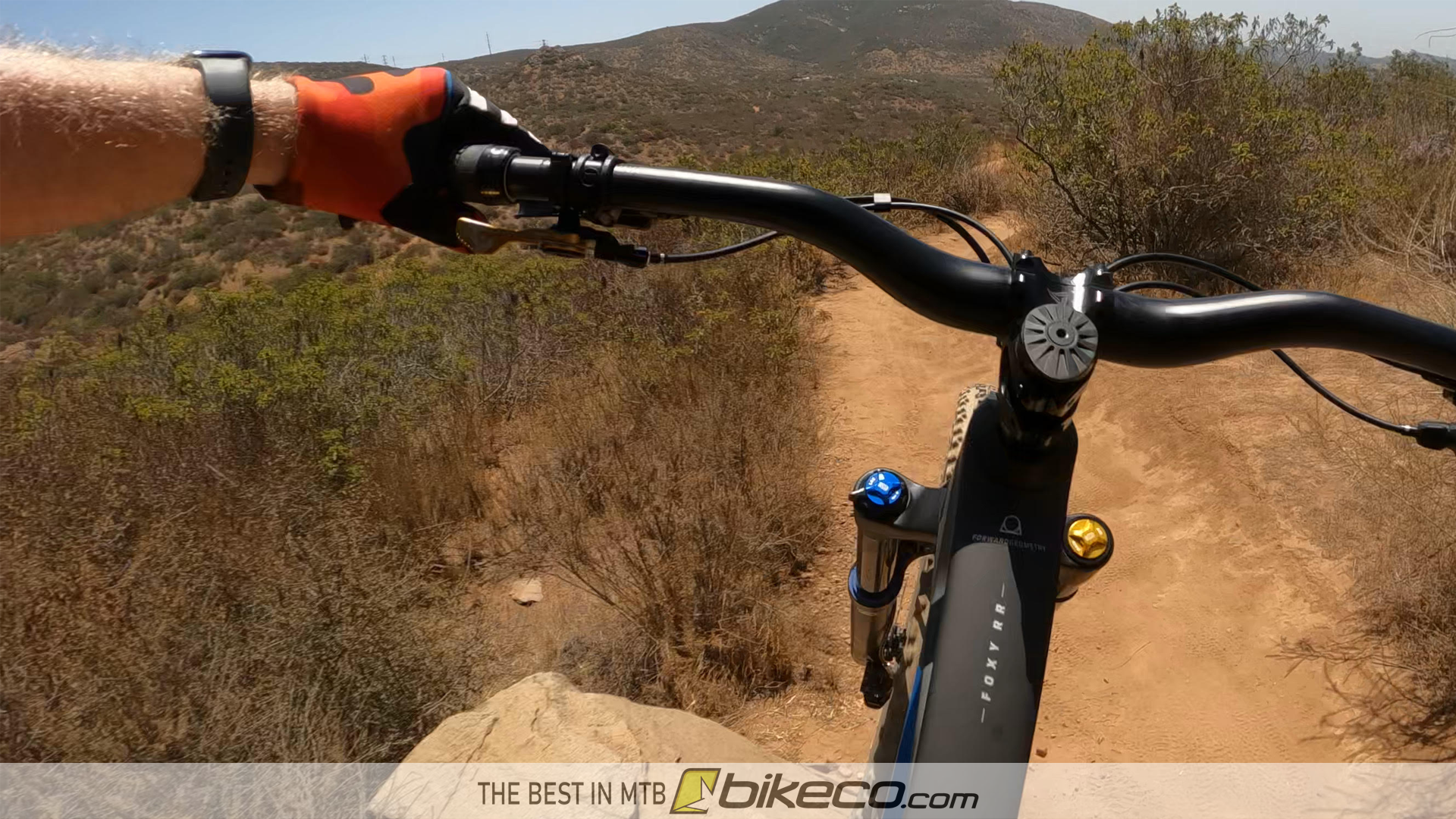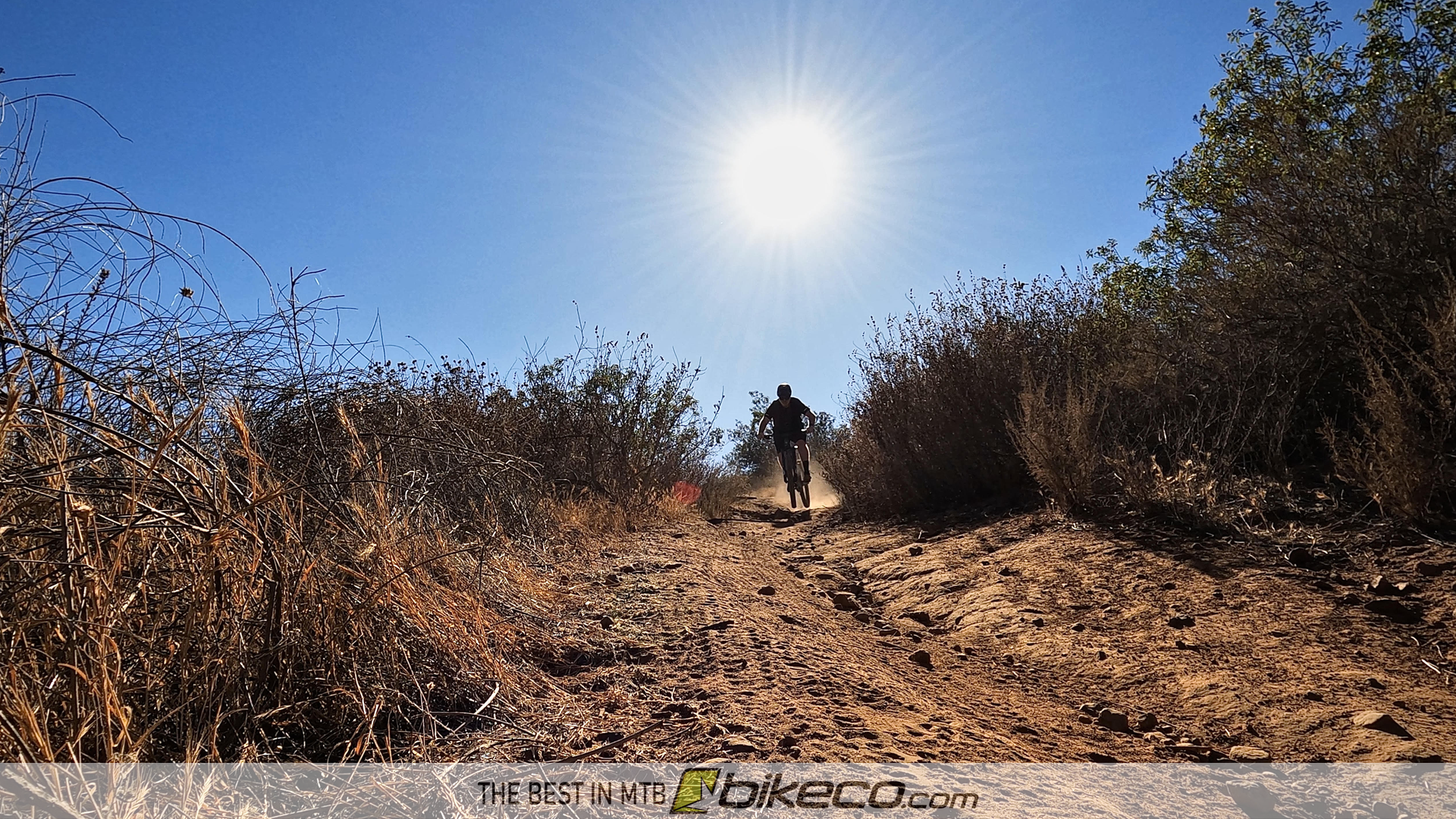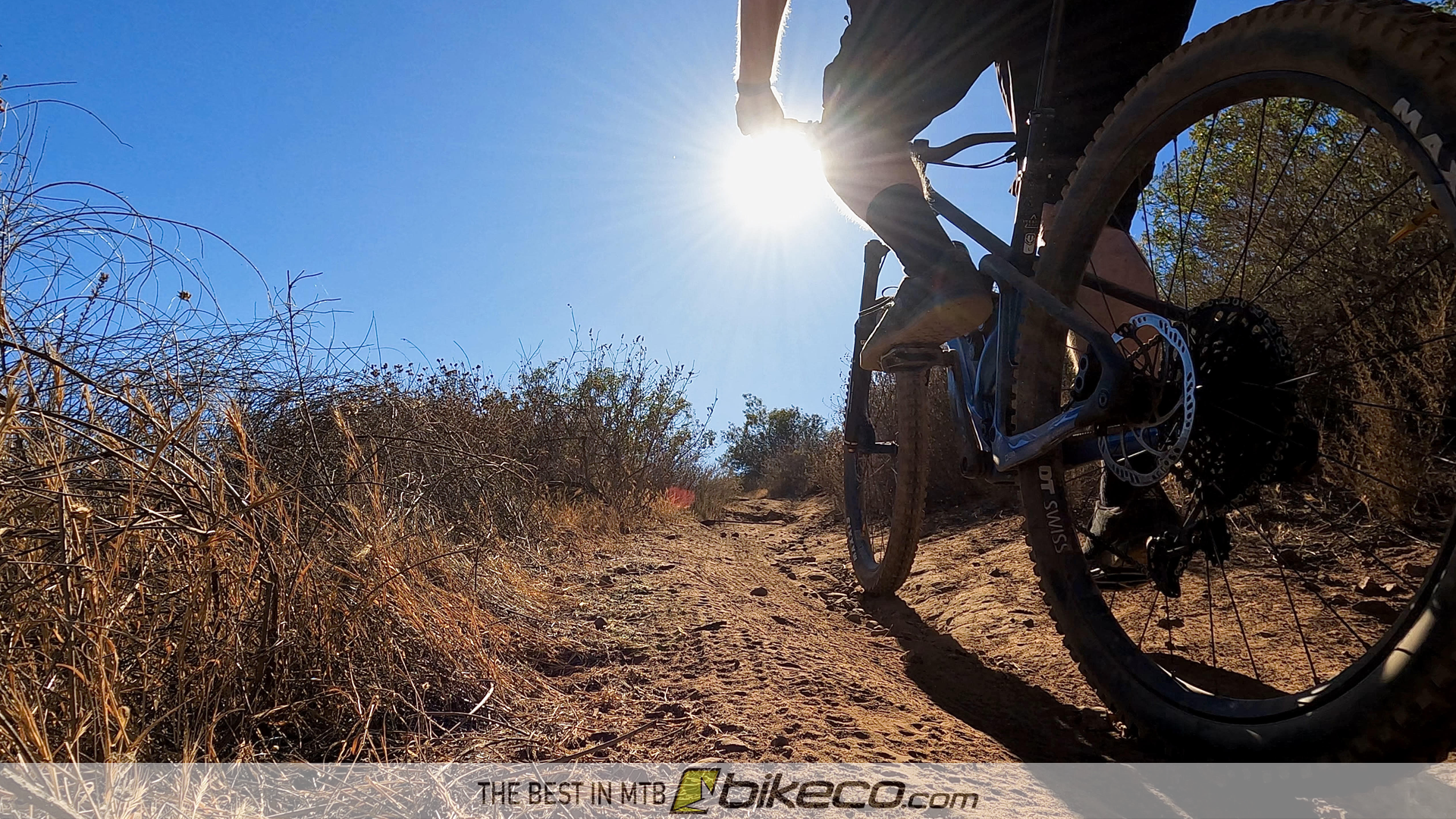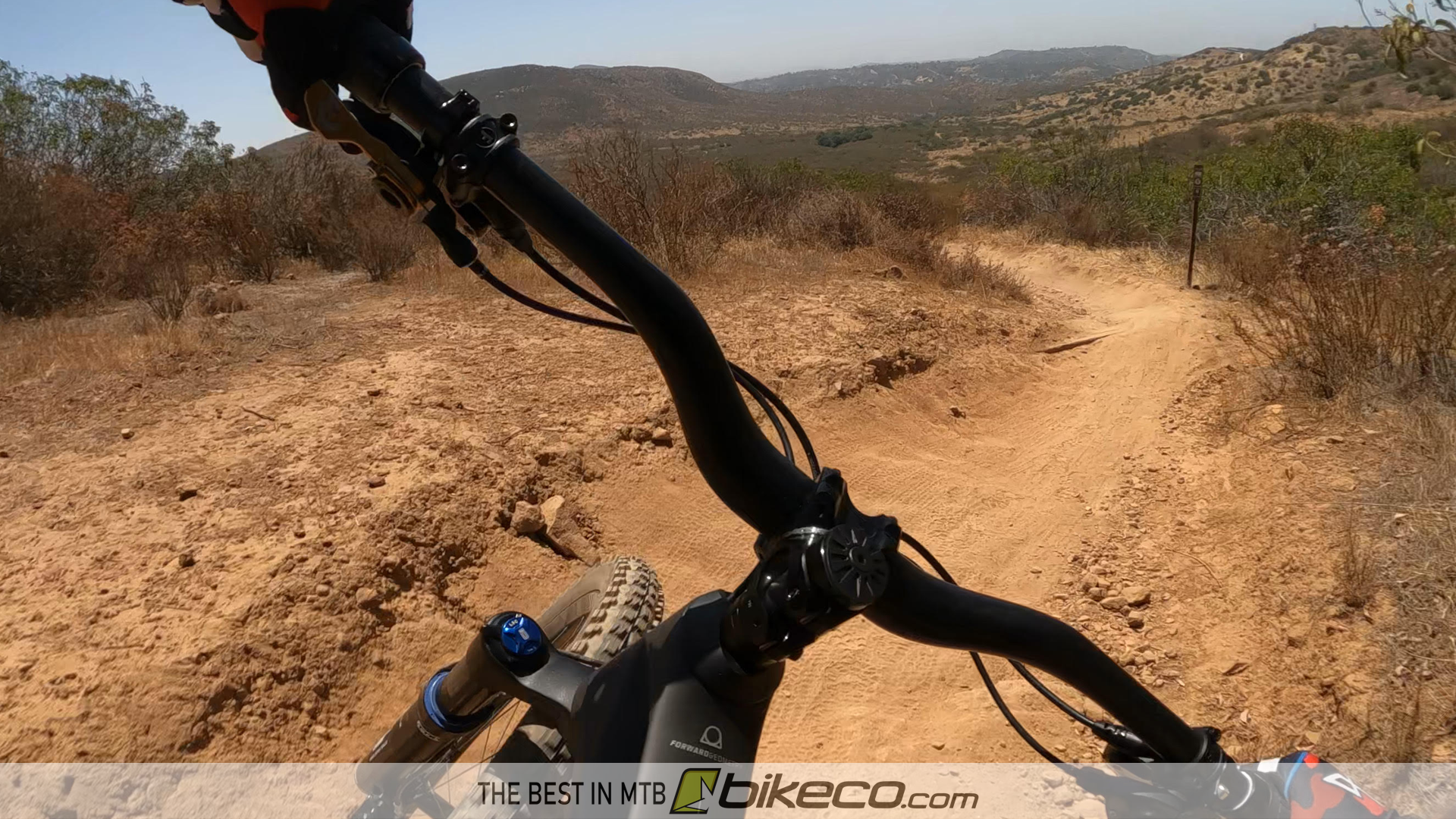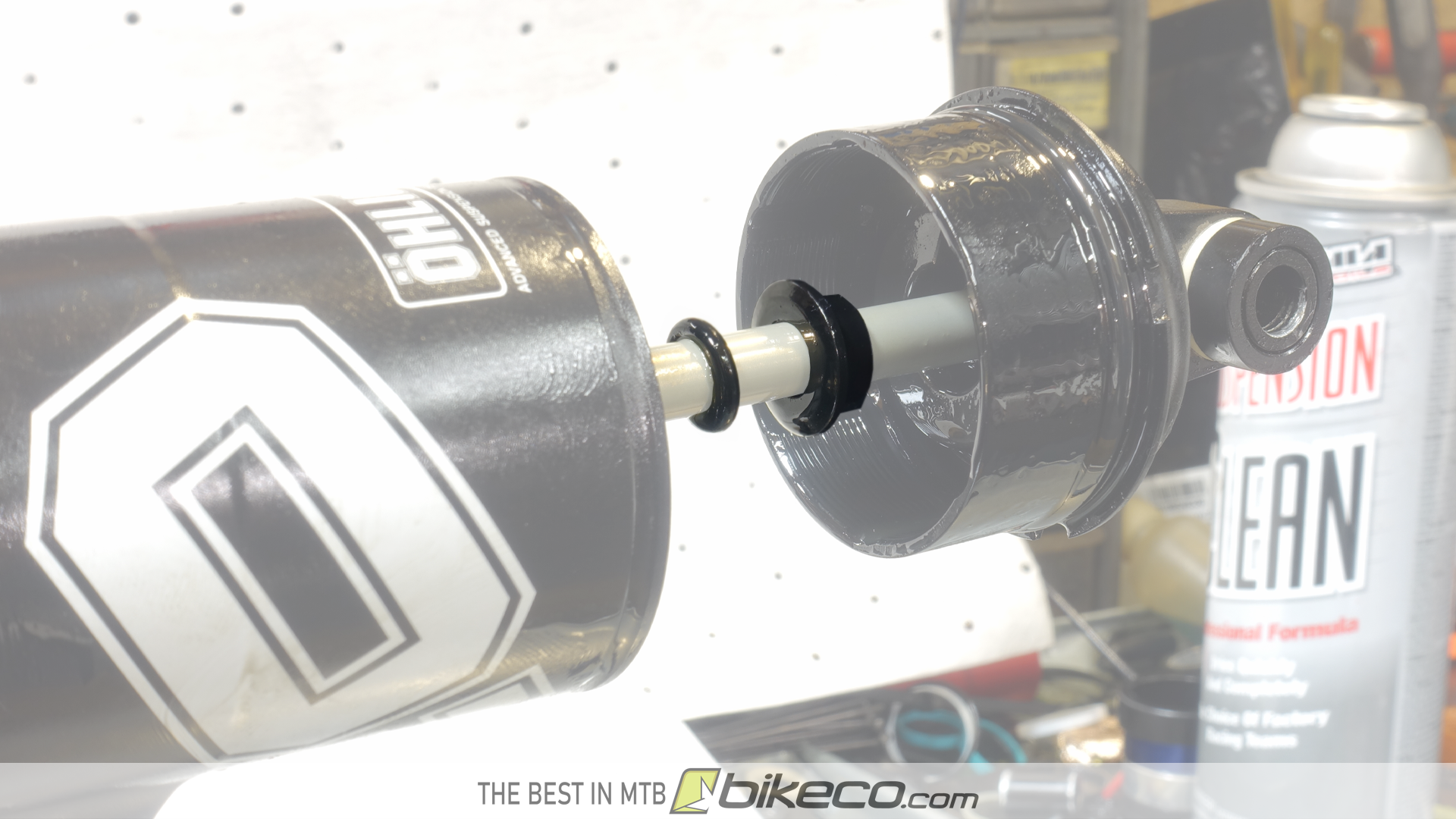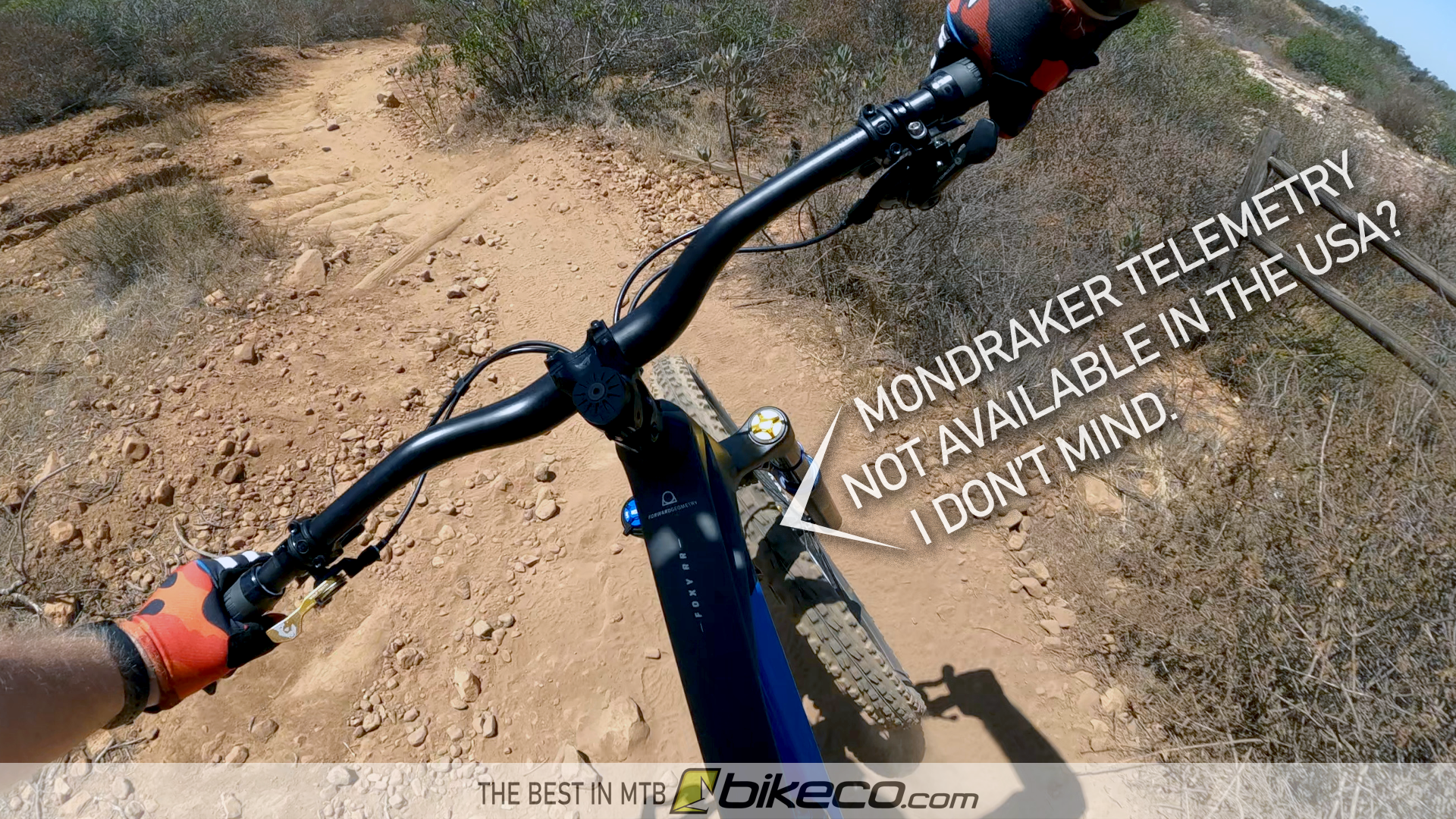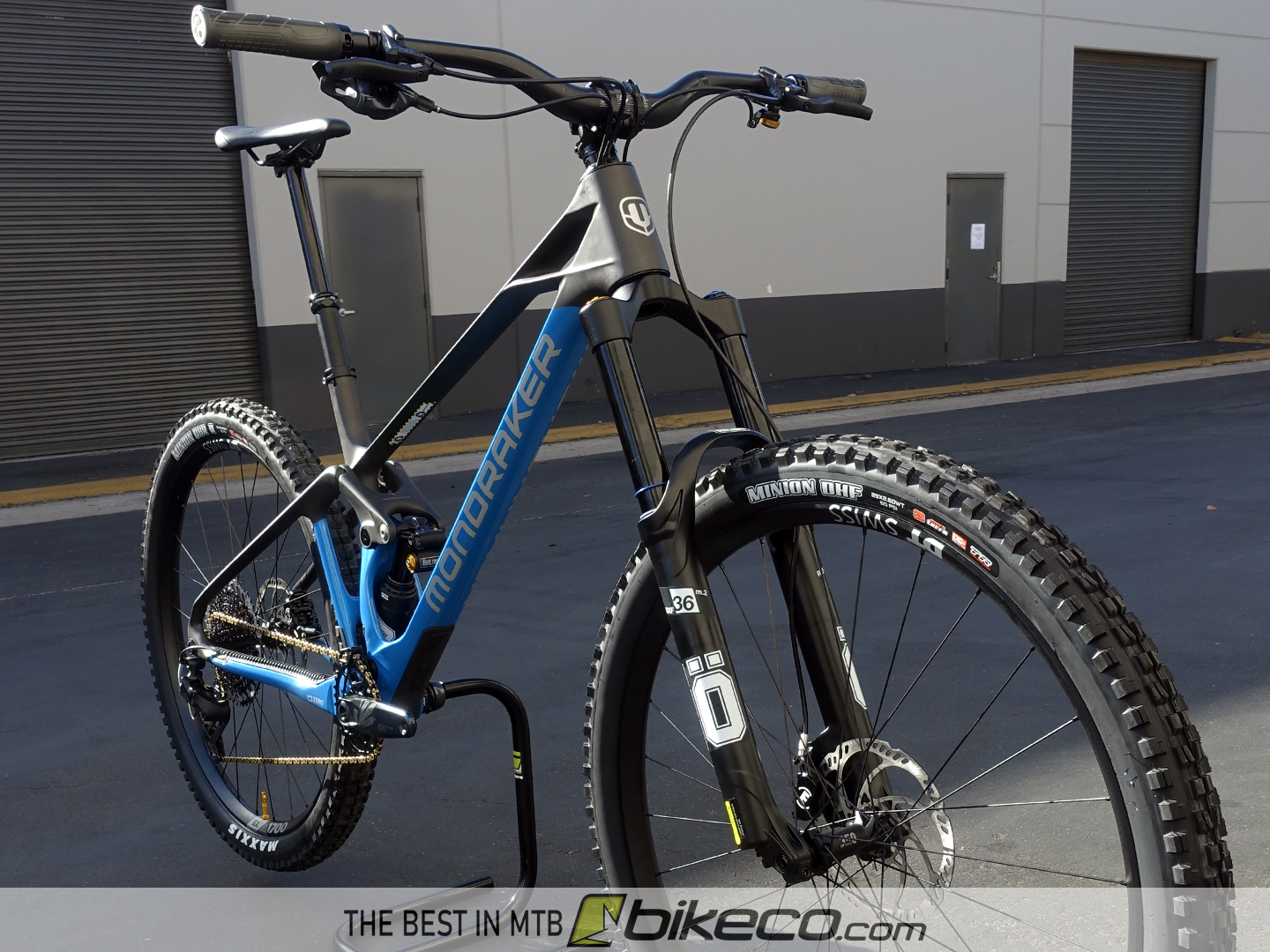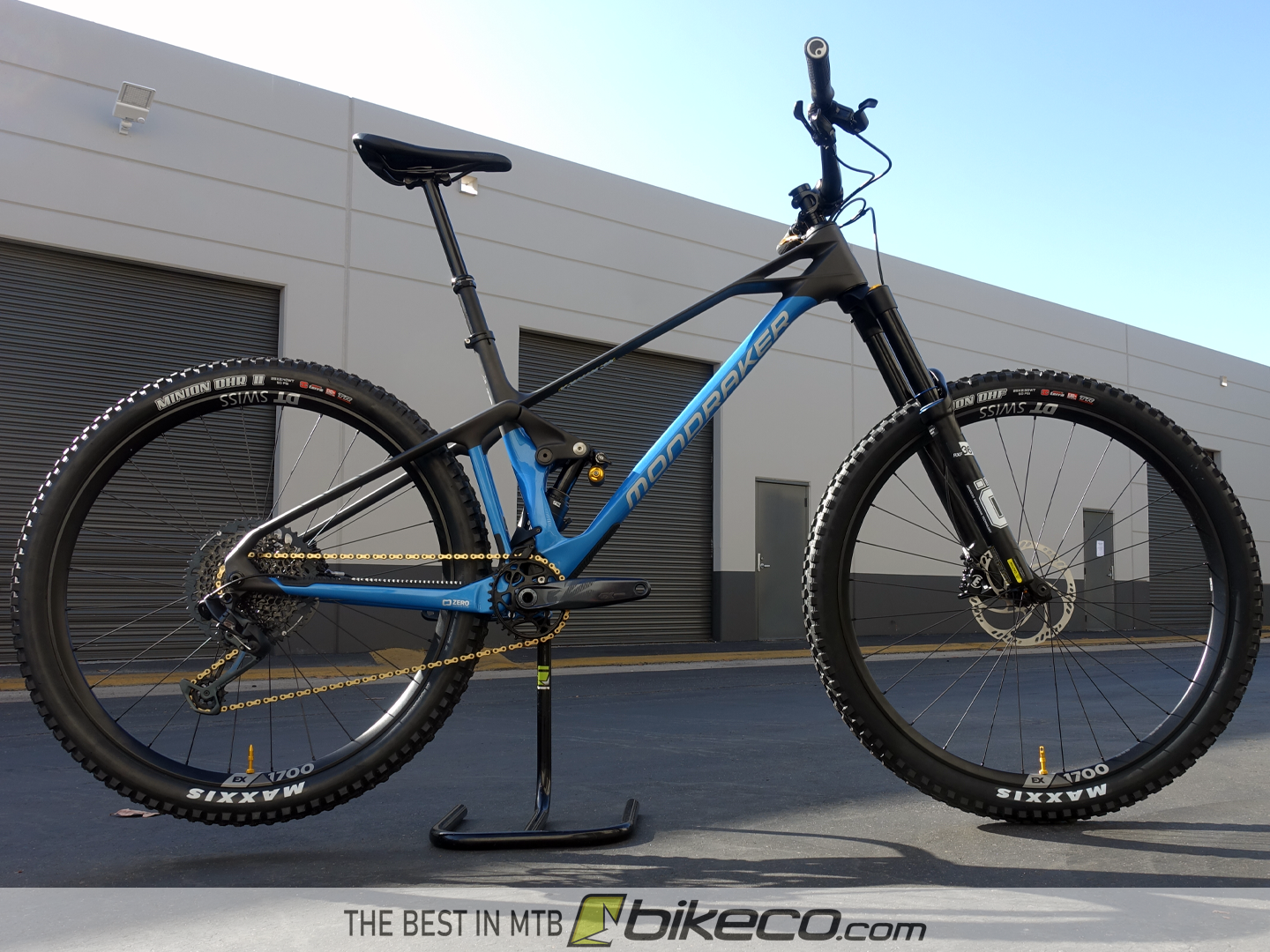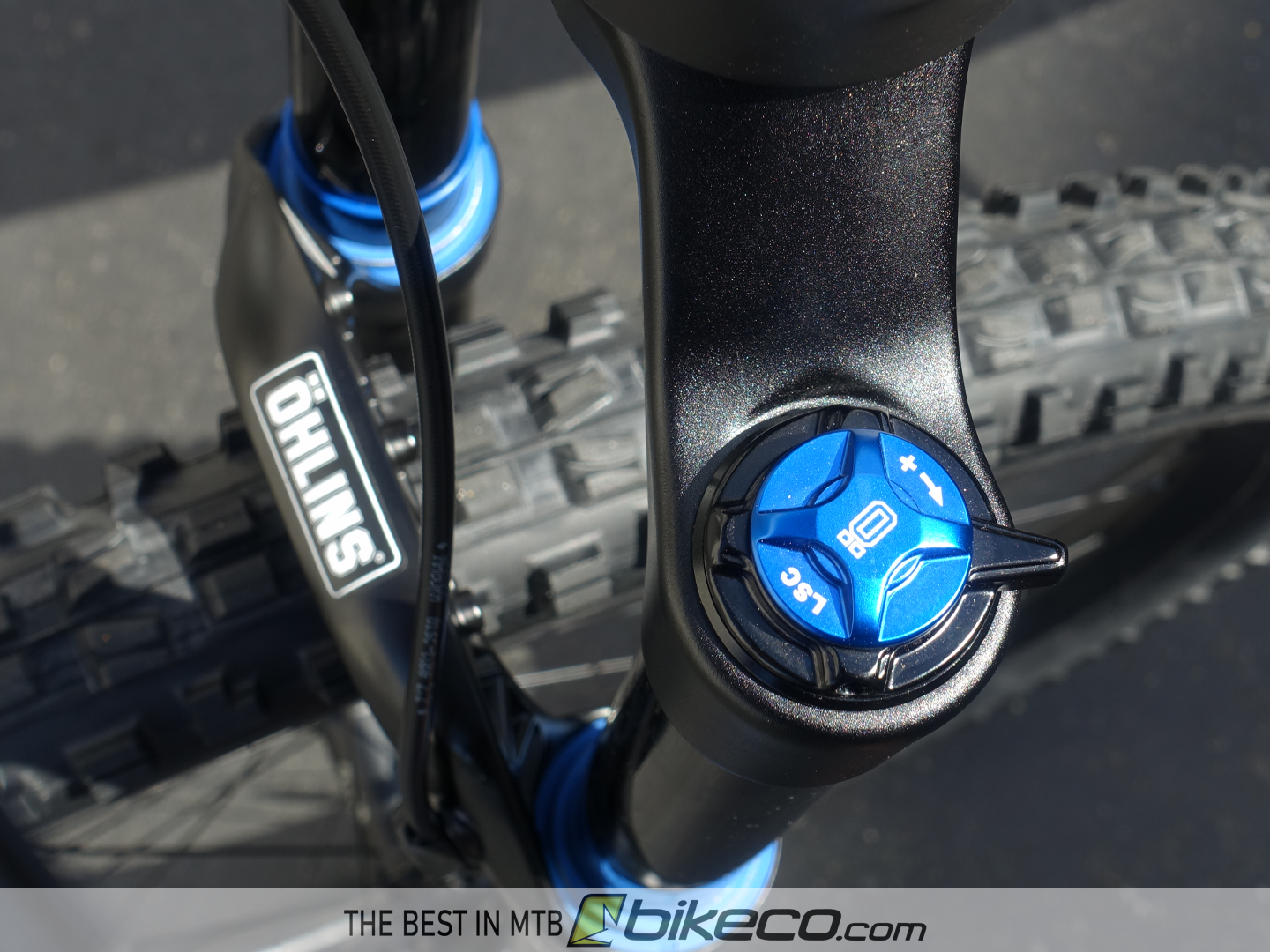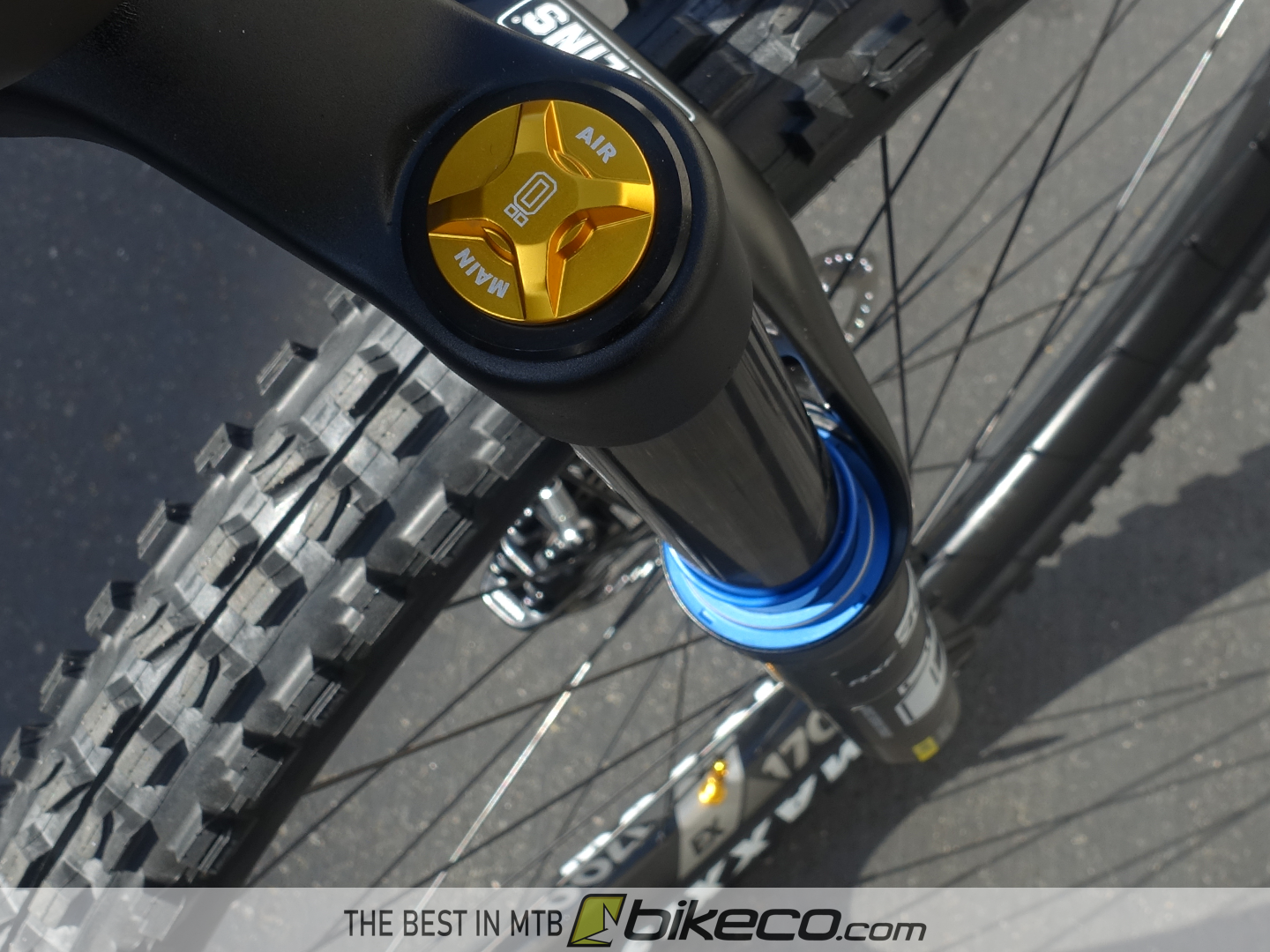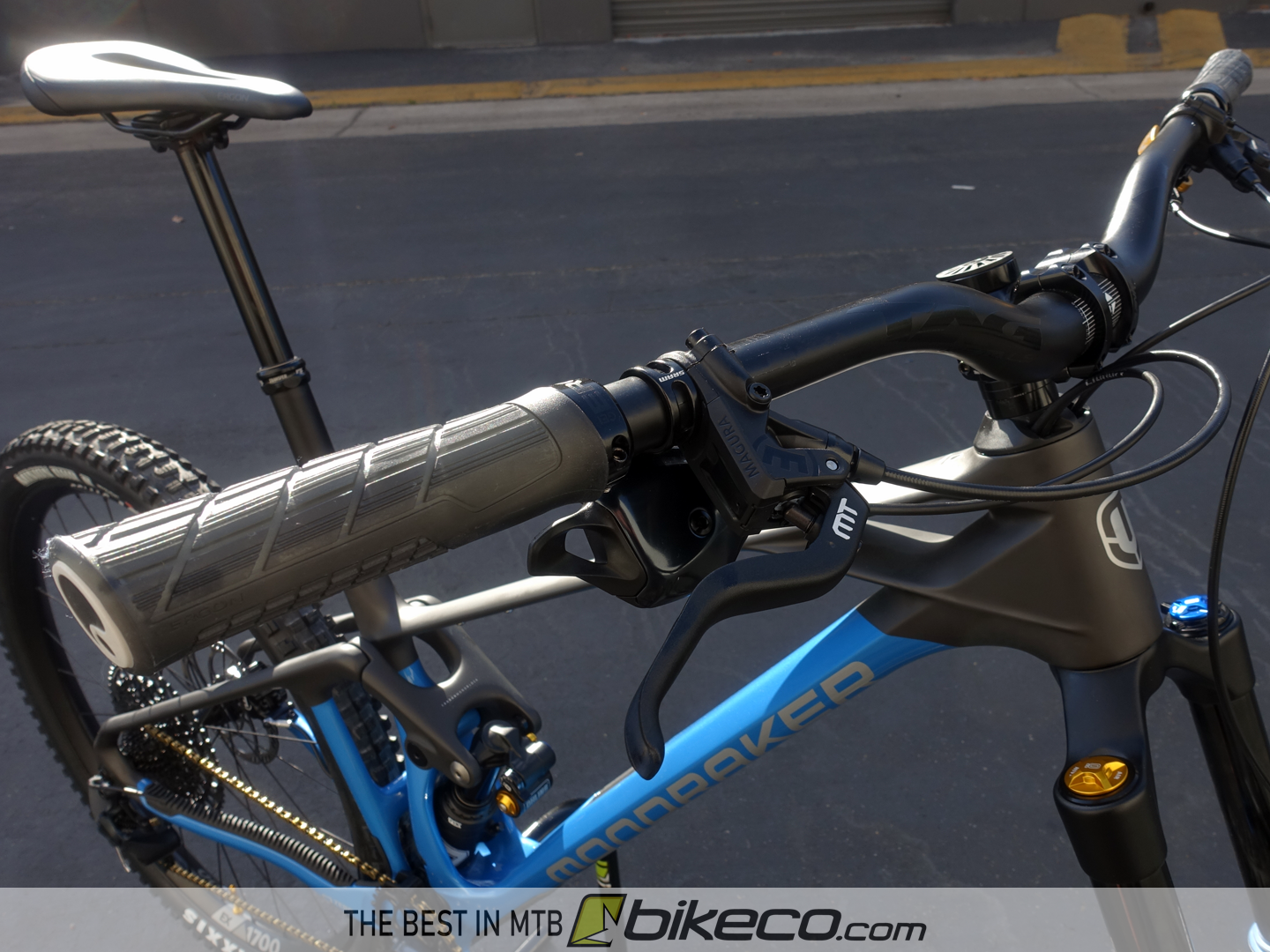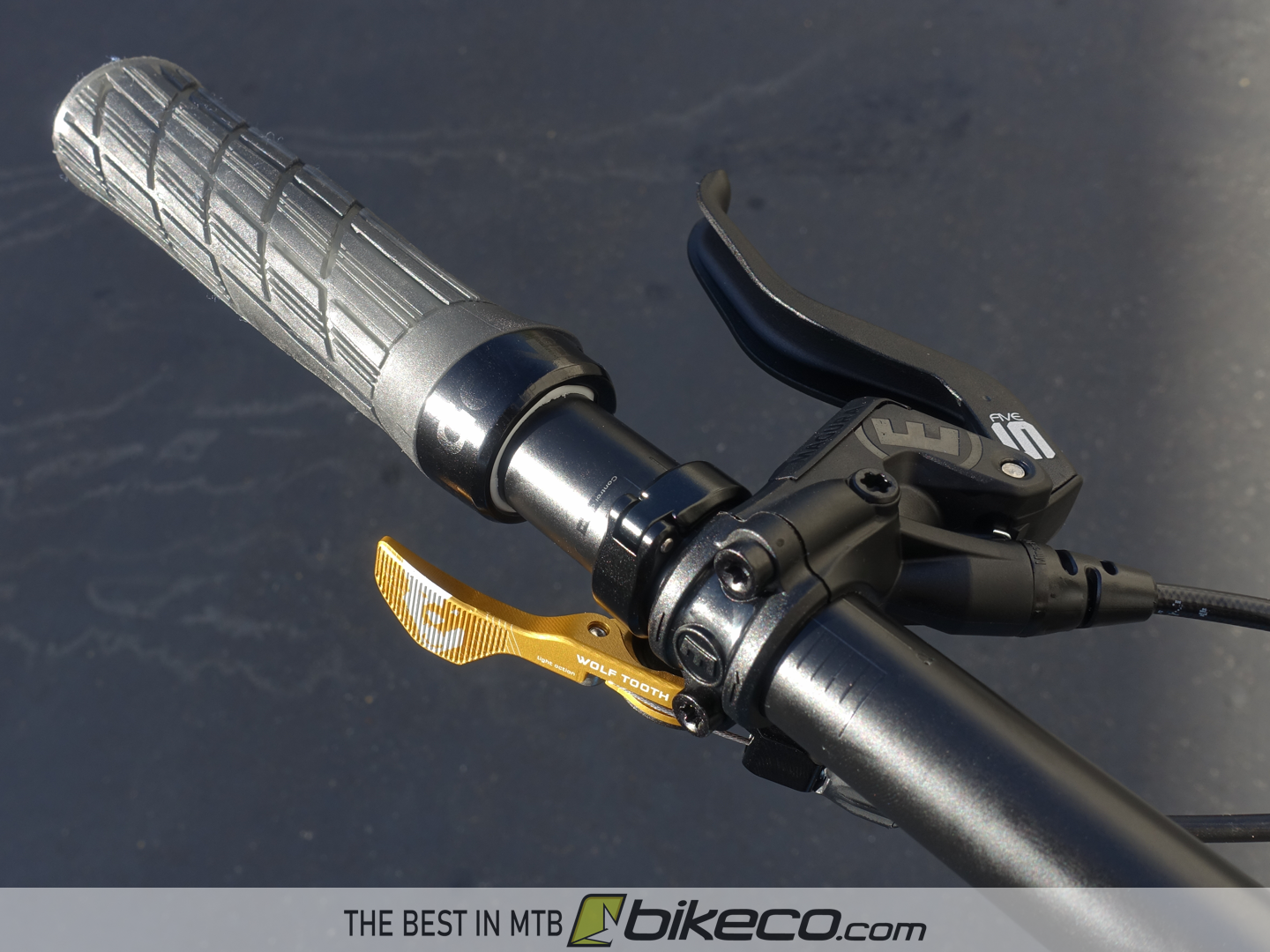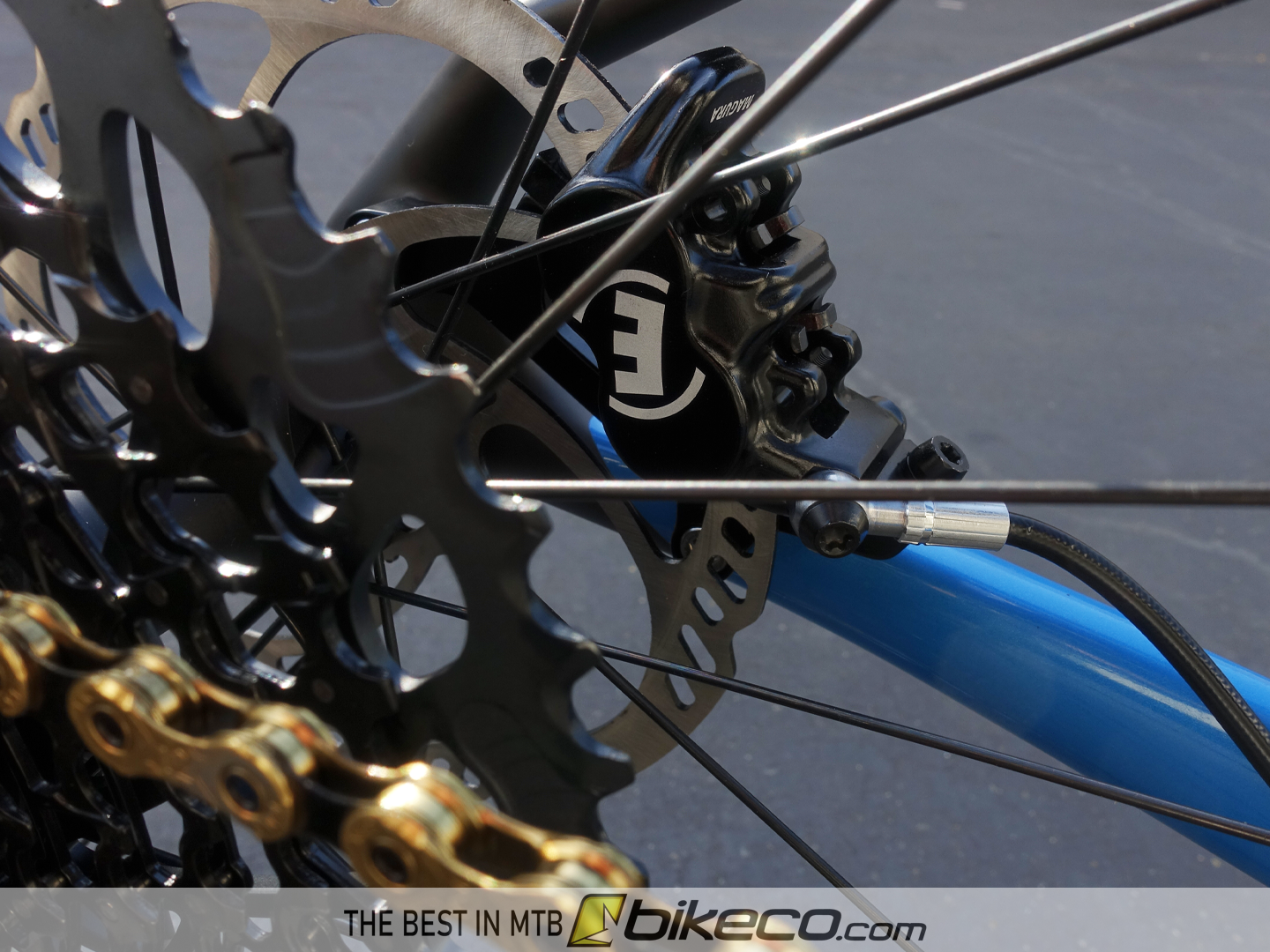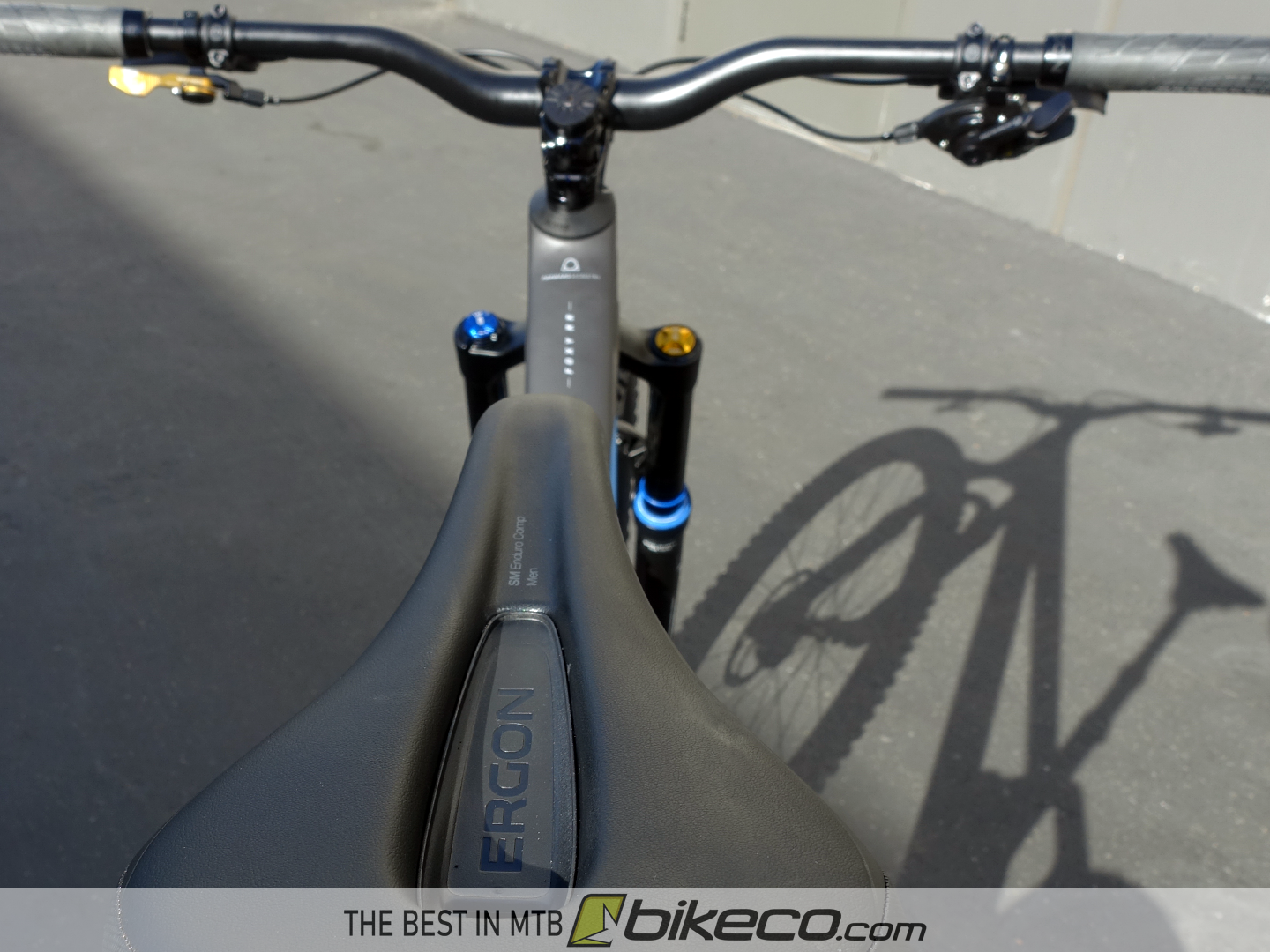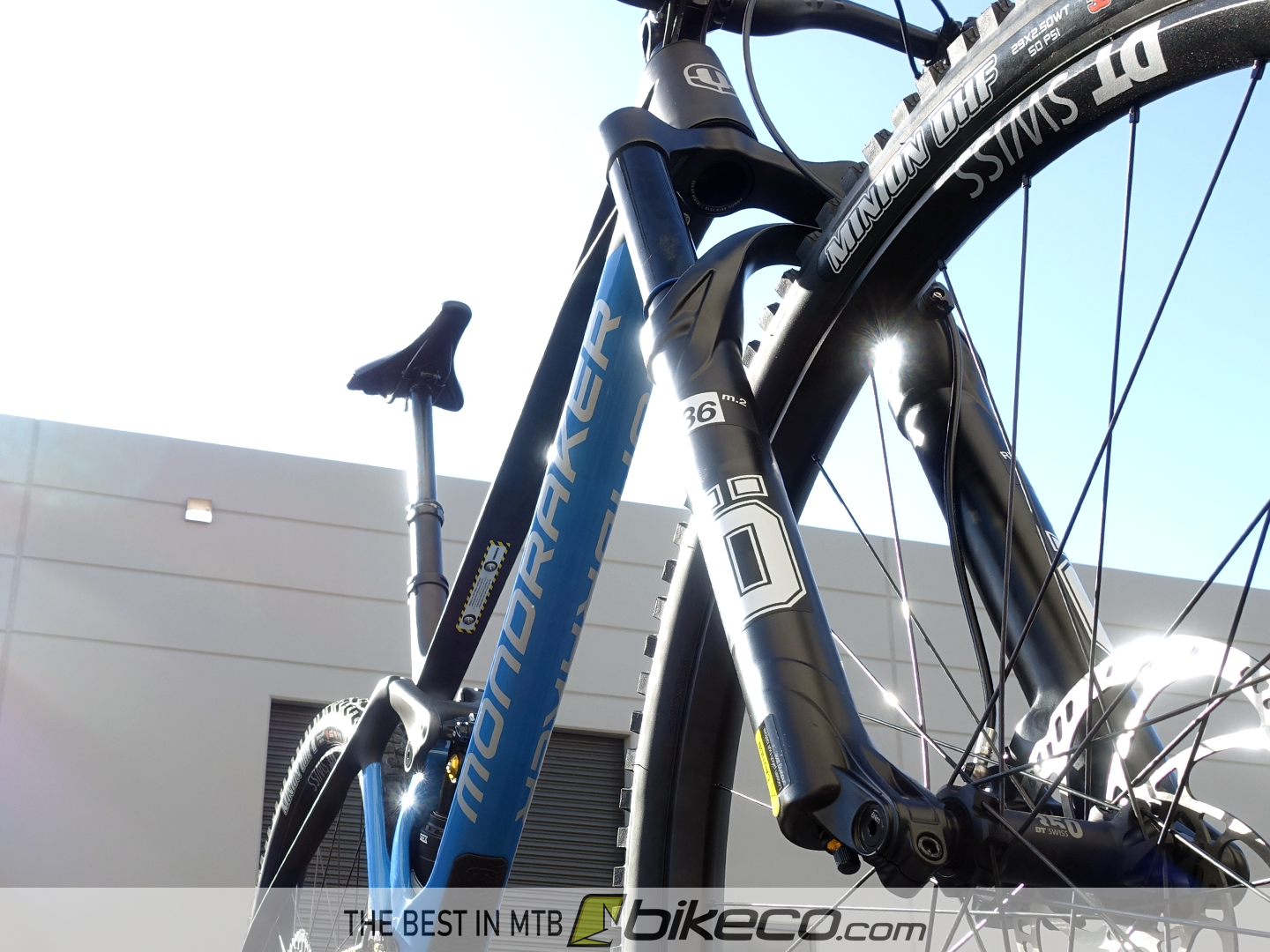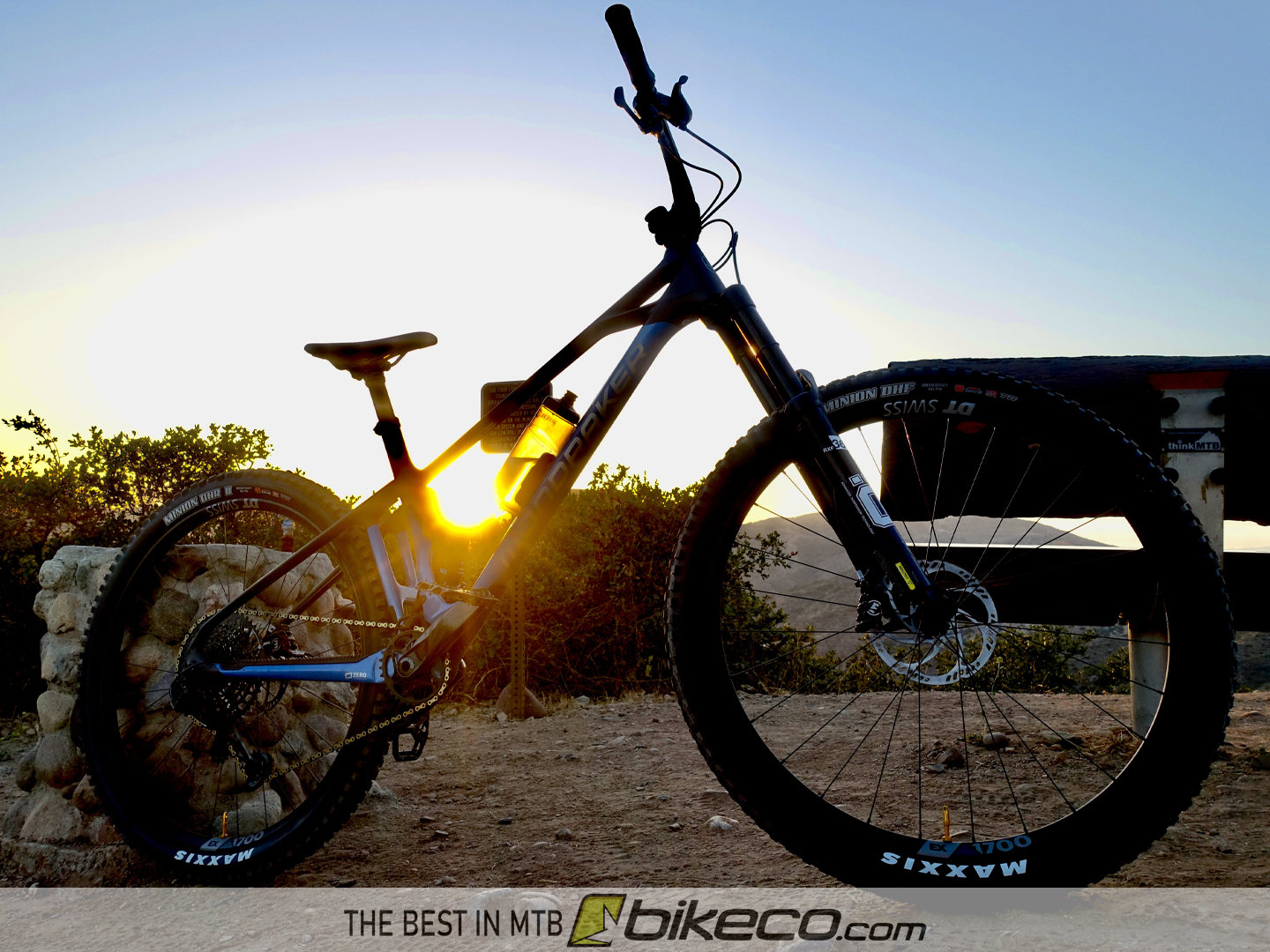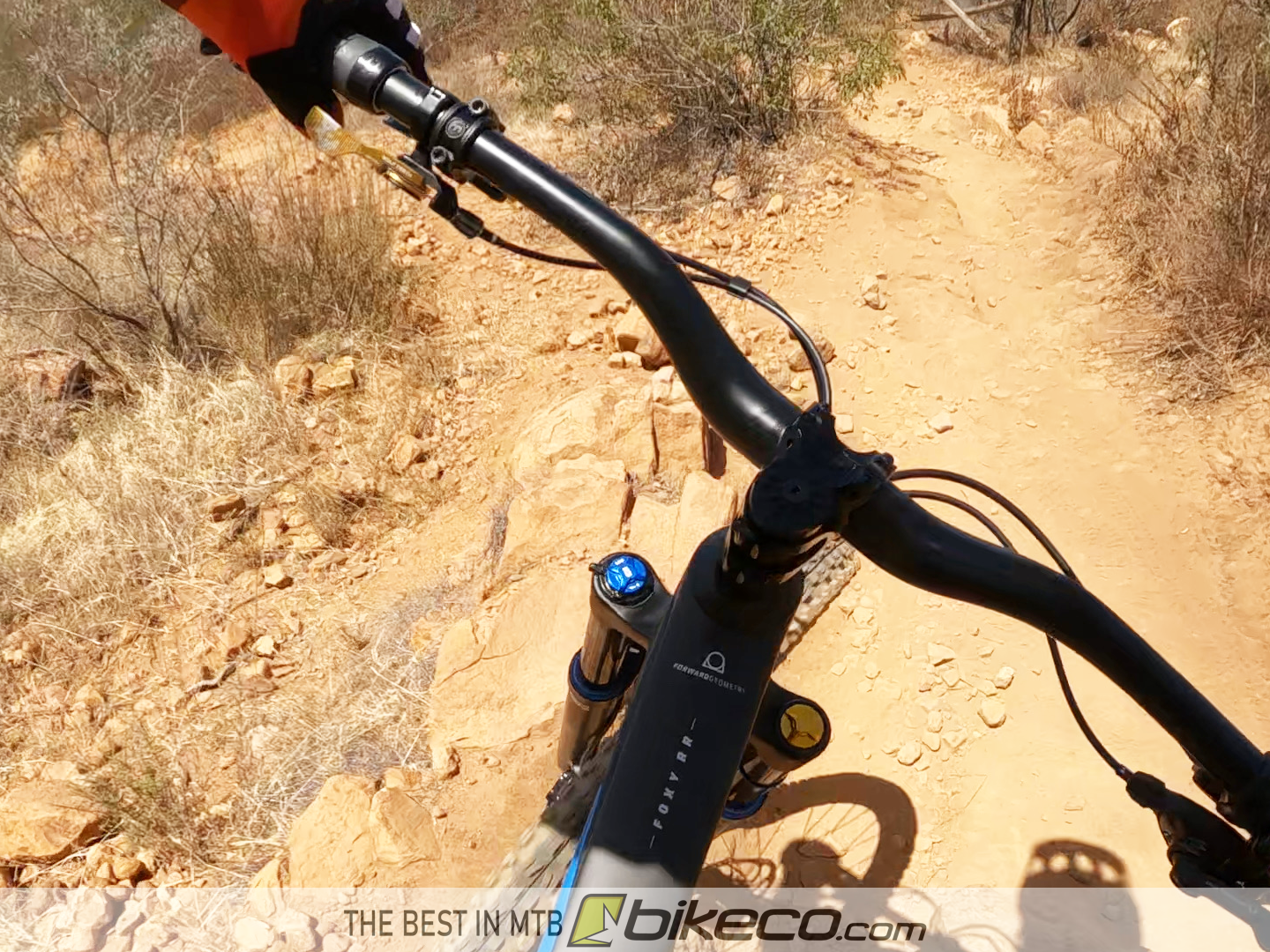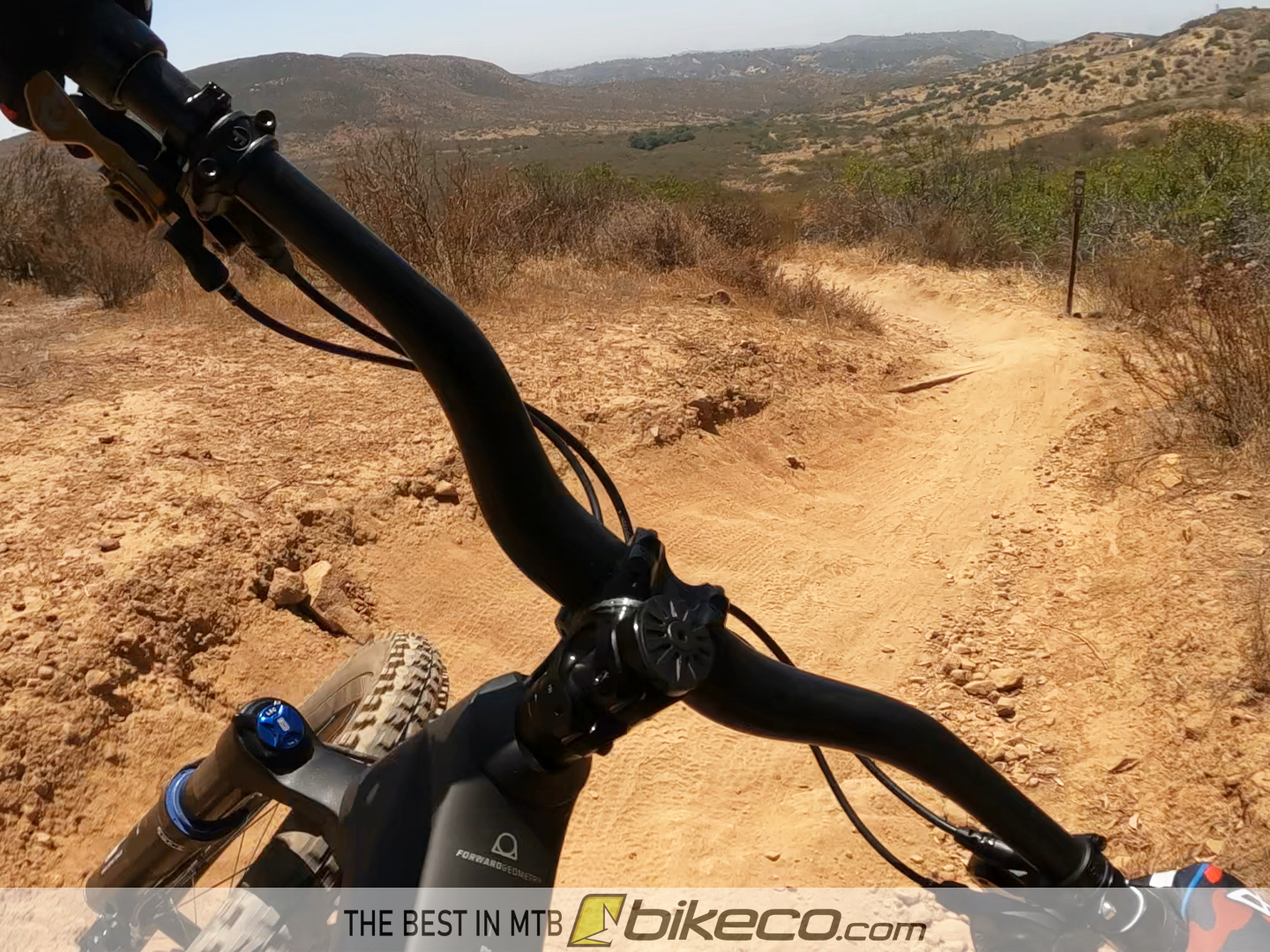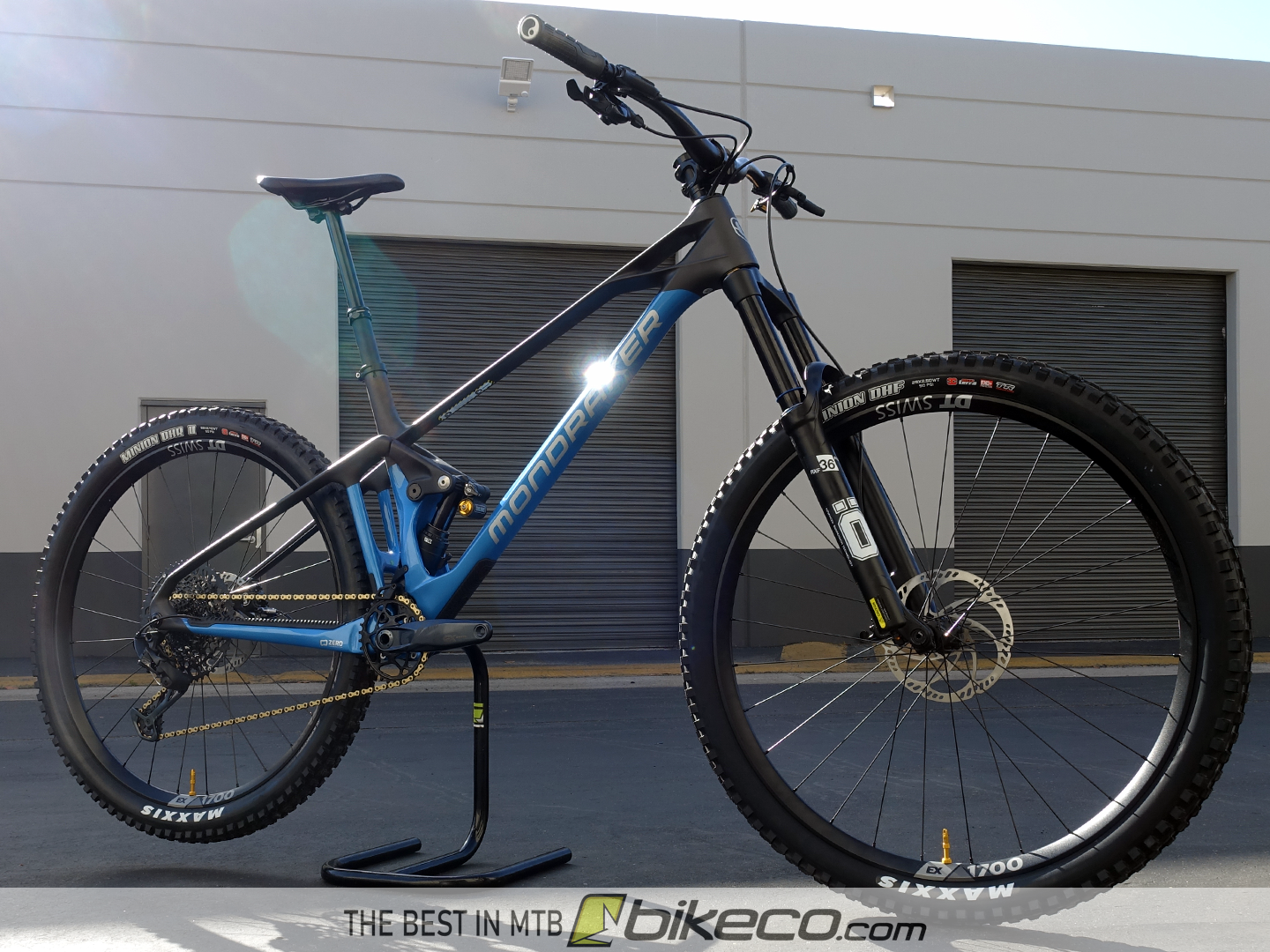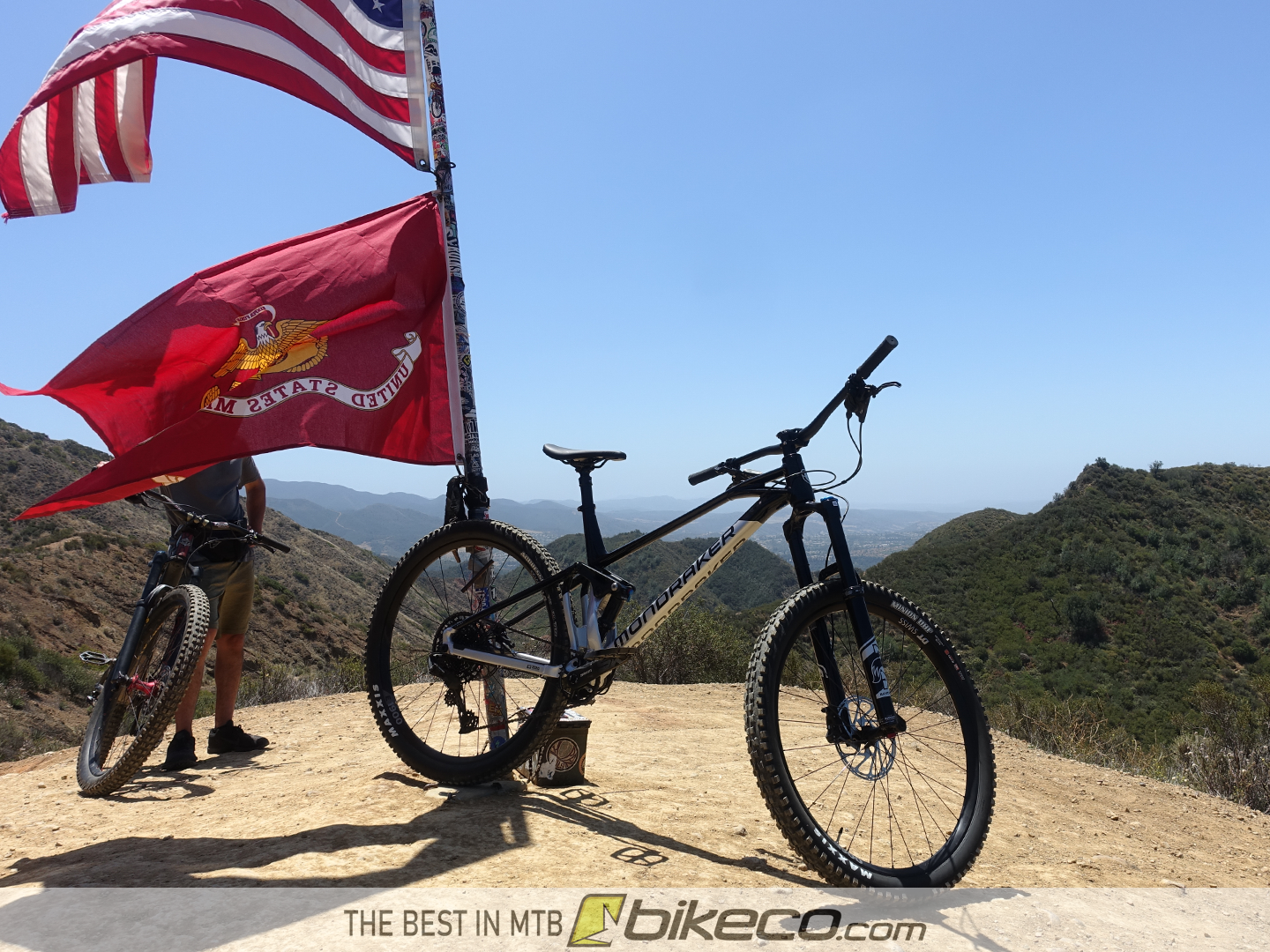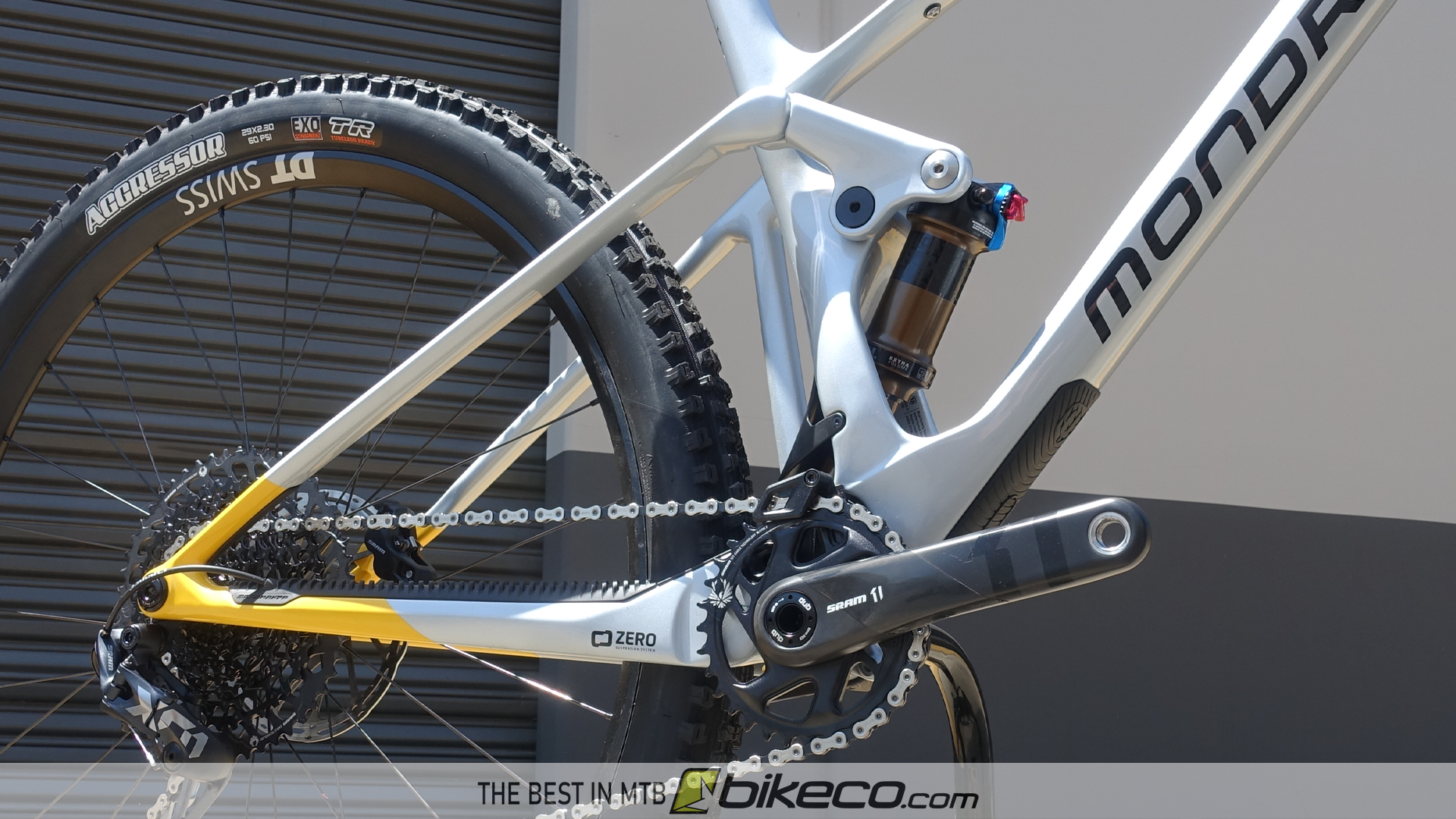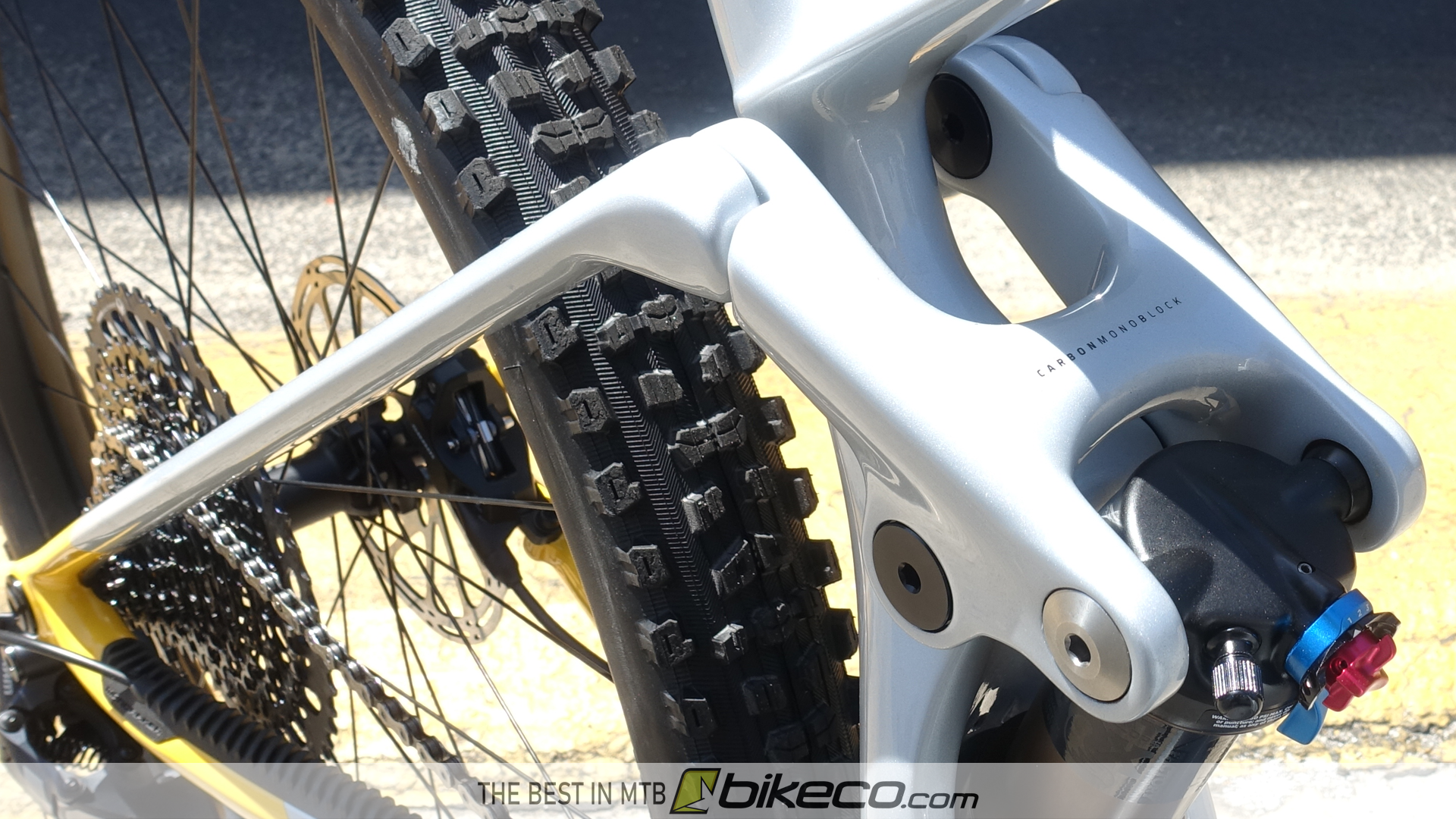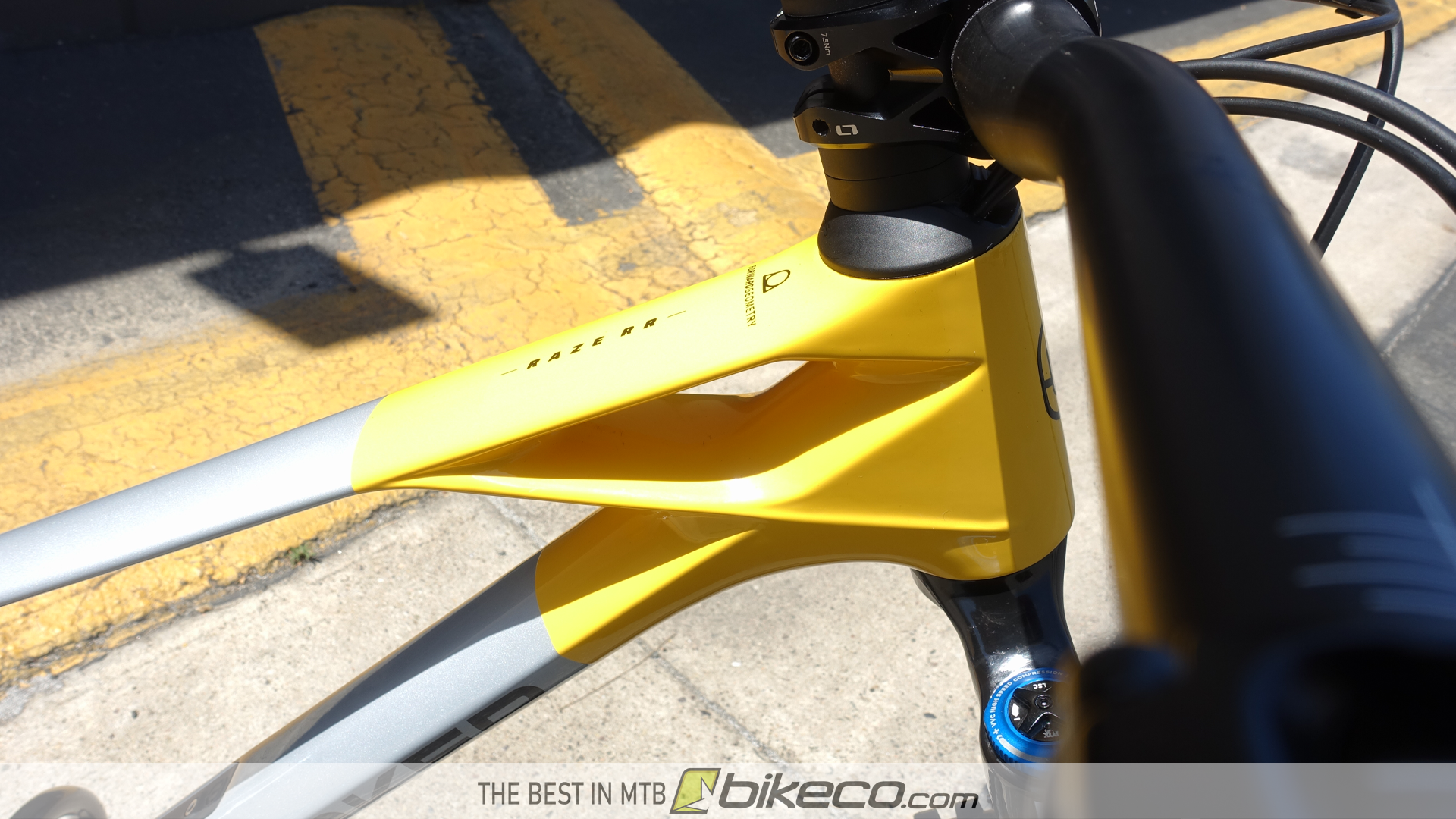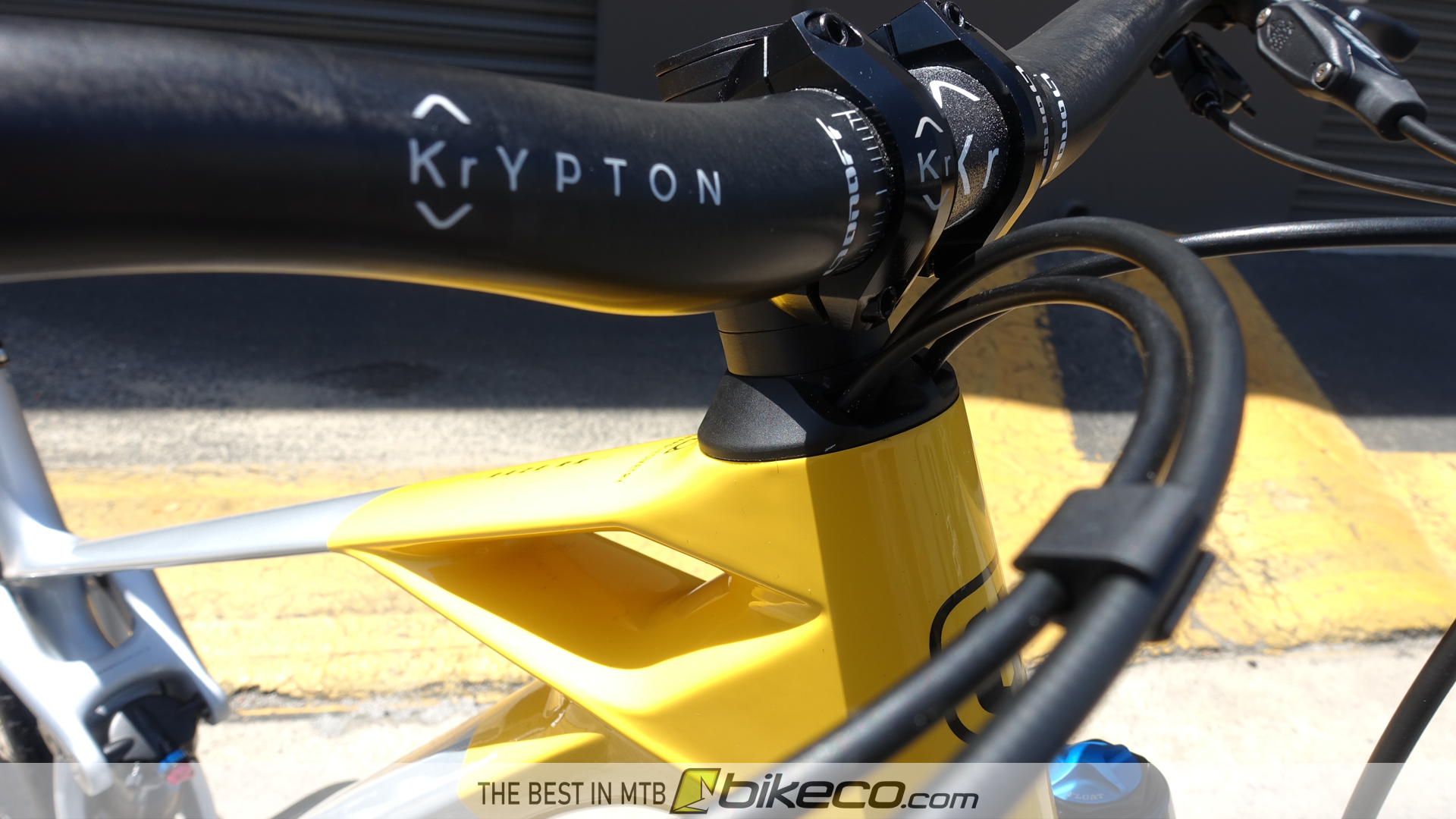
Enjoy some pics of this banging Custom Mondraker RAZE Carbon Complete.
The RAZE is a 130mm travel frame and pairs with 150mm or 160mm fork options depending on your terrain and geometry preference.
The 150mm stock setup gives the RAZE a quick handling feel comfortable in a wide range of terrain and into the enduro category. Adding the additional 10mm of fork travel gives the bike a little bit more “punch” in the enduro terrain by slightly slackening the headtube angle, raising the bottom bracket a touch as well as adding a little more travel for those big moments.
Custom Mondraker RAZE Carbon Pics

This rider went with the SRAM AXS wireless setup, subtracting one cable from the cockpit for an even cleaner look and crisp performance.
Cable routing is done through the headtube for an ultra modern look on the Mondraker lineup.
An AbsoluteBlack oval chainring compliments the 52t Eagle cassette.

Mondraker’s Zero Suspension mounts both upper and lower shock points to the linkage creating a floating suspension that is very compliant while still being notably efficient.
The FOX DPS rear shock provides riders volume tuning as well as low and high speed compression settings and rebound to fine tune its performance.
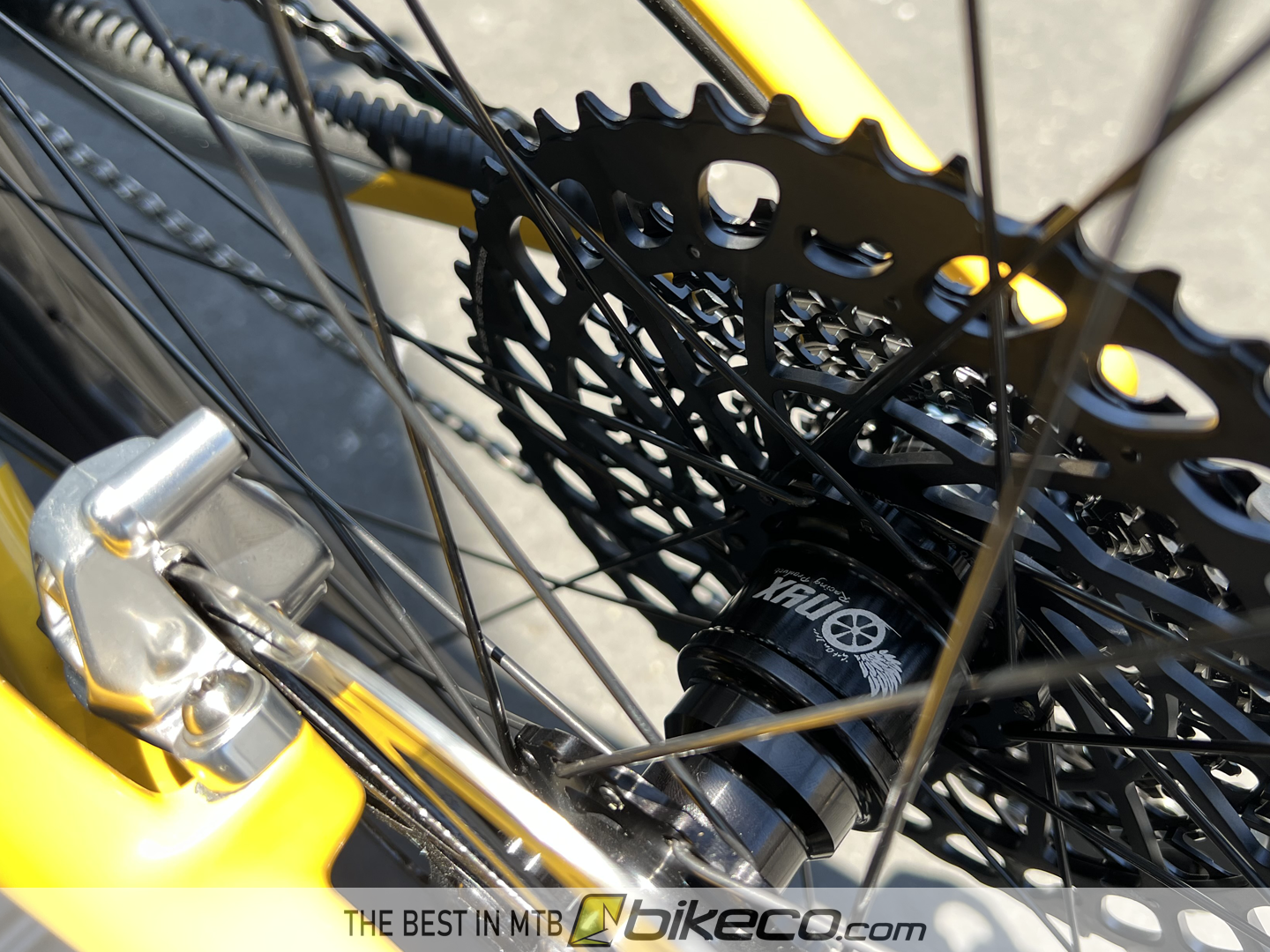
ONYX silent, instant engagement hubs are seen on more and more builds.
Available in a variety of colors and finishes to compliment your build, this build features my very favorite option. Blacked out!

This Mondraker RAZE weighed in at 28 lbs! Impressive for a bike comfortable well into enduro level terrain. Note the EXO+ front tire as well…
Shopping the Best in MTB
Are you in the market for a 2022 Mondraker? or Ibis or Yeti? At BikeCo.com we have #thebestinMTB : products and support staff to keep you dialed in.
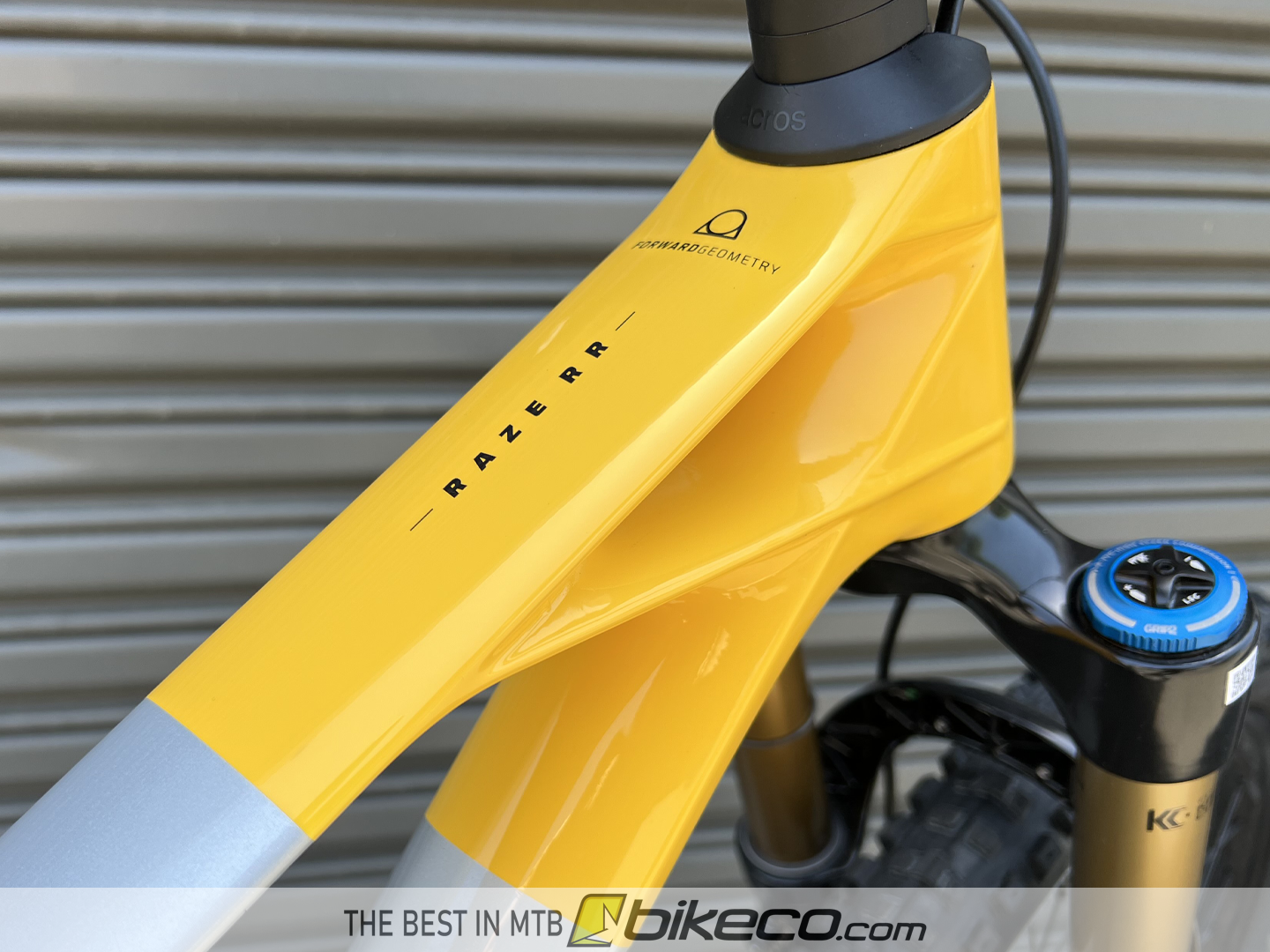
-
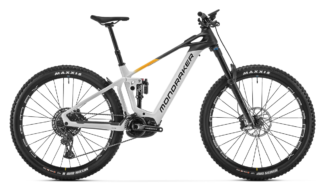
Mondraker Crafty Carbon R Large
$8,499.00Available at Mondraker in Spain. 2-3 Weeks for Delivery. - Updated 04/23/24
Read more -

Mondraker Crafty Carbon R Medium
$8,499.00Available at Mondraker in Spain. 2-3 Weeks for Delivery. - Updated 04/23/24
Read more -

Mondraker Crafty Carbon R Small
$8,499.00Limited Stock at Mondraker in Spain. 2-3 Weeks for Delivery. - Updated 04/23/24
Read more -

Mondraker Crafty Carbon R XLarge
$8,499.00Available at Mondraker in Spain. 2-3 Weeks for Delivery. - Updated 04/23/24
Read more -

Mondraker Crafty Carbon RR Large
$9,999.00In-Stock and Available at BikeCo.com. - Updated 04/23/24
Read more -

Mondraker Crafty Carbon RR Medium
$9,999.00In-Stock and Available at BikeCo.com. - Updated 04/23/24
Read more -
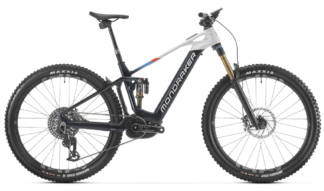
Mondraker Crafty Carbon RR SL Large
$12,799.00Available at Mondraker in Spain. 2-3 Weeks for Delivery. - Updated 04/23/24
Read more -

Mondraker Crafty Carbon RR SL Medium
$12,799.00Available at Mondraker in Spain. 2-3 Weeks for Delivery. - Updated 04/23/24
Read more -

Mondraker Crafty Carbon RR SL Small
$12,799.00Limited Stock at Mondraker in Spain. 2-3 Weeks for Delivery. - Updated 04/23/24
Read more -

Mondraker Crafty Carbon RR SL X-Large
$12,799.00Limited Stock at Mondraker in Spain. 2-3 Weeks for Delivery. - Updated 04/23/24
Read more -

Mondraker Crafty Carbon RR Small
$9,999.00Limited Stock at Mondraker in Spain. 2-3 Weeks for Delivery. - Updated 04/23/24
Read more -

Mondraker Crafty Carbon RR XLarge
$9,999.00Limited Stock at Mondraker in Spain. 2-3 Weeks for Delivery. - Updated 04/23/24
Read more -

Mondraker Crafty Carbon XR Large
$10,999.00In-Stock and Available at BikeCo.com. - Updated 04/23/24
Read more -

Mondraker Crafty Carbon XR Medium
$10,999.00Limited Stock at Mondraker in Spain. 2-3 Weeks for Delivery. - Updated 04/23/24
Read more -

Mondraker Crafty Carbon XR Small
$10,999.00Limited Stock at Mondraker in Spain. 2-3 Weeks for Delivery. - Updated 04/23/24
Read more -

Mondraker Crafty Carbon XR X-Large
$10,999.00Available at Mondraker in Spain. 2-3 Weeks for Delivery. - Updated 04/23/24
Read more -

Mondraker Crafty R Large in Grey & Blue
$6,799.00Available at Mondraker in Spain. 2-3 Weeks for Delivery. - Updated 04/23/24
Read more -

Mondraker Crafty R Large in Silver & Red
$6,799.00Available at Mondraker in Spain. 2-3 Weeks for Delivery. - Updated 04/23/24
Read more -

Mondraker Crafty R Medium in Grey & Blue
$6,799.00Available at Mondraker in Spain. 2-3 Weeks for Delivery. - Updated 04/23/24
Read more -

Mondraker Crafty R Medium in Silver & Red
$6,799.00Available at Mondraker in Spain. 2-3 Weeks for Delivery. - Updated 04/23/24
Read more -

Mondraker Crafty R Small in Grey & Blue
$6,799.00Limited Stock at Mondraker in Spain. 2-3 Weeks for Delivery. - Updated 04/23/24
Read more -

Mondraker Crafty R Small in Silver & Red
$6,799.00Available at Mondraker in Spain. 2-3 Weeks for Delivery. - Updated 04/23/24
Read more -

Mondraker Crafty R XLarge in Grey & Blue
$6,799.00Available at Mondraker in Spain. 2-3 Weeks for Delivery. - Updated 04/23/24
Read more -

Mondraker Crafty R XLarge in Silver & Red
$6,799.00Available at Mondraker in Spain. 2-3 Weeks for Delivery. - Updated 04/23/24
Read more -
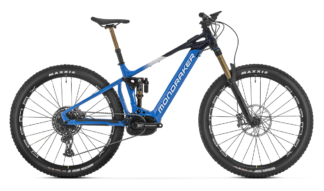
Mondraker Crafty RR Large
$7,699.00In-Stock and Available at BikeCo.com. - Updated 04/23/24
Read more -

Mondraker Crafty RR Medium
$7,699.00Available at Mondraker in Spain. 2-3 Weeks for Delivery. - Updated 04/23/24
Read more -

Mondraker Crafty RR Small
$7,699.00Available at Mondraker in Spain. 2-3 Weeks for Delivery. - Updated 04/23/24
Read more -

Mondraker Crafty RR XLarge
$7,699.00Limited Stock at Mondraker in Spain. 2-3 Weeks for Delivery. - Updated 04/23/24
Read more -
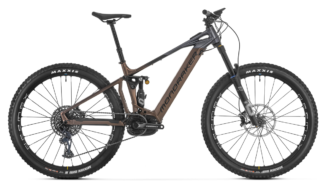
Mondraker Crafty XR Large
$8,199.00Limited Stock at Mondraker in Spain. 2-3 Weeks for Delivery. - Updated 04/23/24
Read more -

Mondraker Crafty XR Medium
$8,199.00Available at Mondraker in Spain. 2-3 Weeks for Delivery. - Updated 04/23/24
Read more -

Mondraker Crafty XR Small
$8,199.00Limited Stock at Mondraker in Spain. 2-3 Weeks for Delivery. - Updated 04/23/24
Read more -

Mondraker Crafty XR XLarge
$8,199.00Available at Mondraker in Spain. 2-3 Weeks for Delivery. - Updated 04/23/24
Read more -
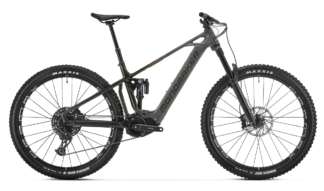
Mondraker Crusher Large
$6,999.00Limited Stock at Mondraker in Spain. 2-3 Weeks for Delivery. - Updated 04/23/24
Read more -

Mondraker Crusher Medium
$6,999.00Limited Stock at Mondraker in Spain. 2-3 Weeks for Delivery. - Updated 04/23/24
Read more -
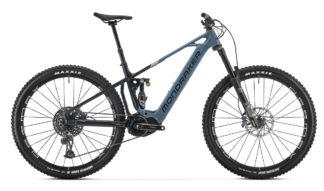
Mondraker Crusher R Large
$7,999.00Limited Stock at Mondraker in Spain. 2-3 Weeks for Delivery. - Updated 04/23/24
Read more -

Mondraker Crusher R Medium
$7,999.00Limited Stock at Mondraker in Spain. 2-3 Weeks for Delivery. - Updated 04/23/24
Read more -

Mondraker Crusher R Small
$7,999.00Limited Stock at Mondraker in Spain. 2-3 Weeks for Delivery. - Updated 04/23/24
Read more -

Mondraker Crusher R XLarge
$7,999.00Limited Stock at Mondraker in Spain. 2-3 Weeks for Delivery. - Updated 04/23/24
Read more -
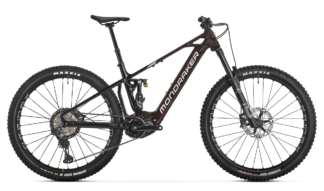
Mondraker Crusher RR Large
$8,999.00Limited Stock at Mondraker in Spain. 2-3 Weeks for Delivery. - Updated 04/23/24
Read more -

Mondraker Crusher RR Medium
$8,999.00Limited Stock at Mondraker in Spain. 2-3 Weeks for Delivery. - Updated 04/23/24
Read more -

Mondraker Crusher RR Small
$8,999.00Limited Stock at Mondraker in Spain. 2-3 Weeks for Delivery. - Updated 04/23/24
Read more -

Mondraker Crusher RR XLarge
$8,999.00Limited Stock at Mondraker in Spain. 2-3 Weeks for Delivery. - Updated 04/23/24
Read more -

Mondraker Crusher Small
$6,999.00Limited Stock at Mondraker in Spain. 2-3 Weeks for Delivery. - Updated 04/23/24
Read more -

Mondraker Crusher XLarge
$6,999.00Limited Stock at Mondraker in Spain. 2-3 Weeks for Delivery. - Updated 04/23/24
Read more -
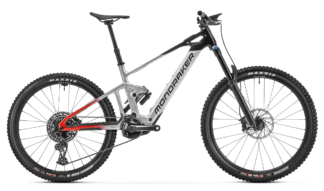
Mondraker Dune R Large
$7,999.00Available at Mondraker 3rd Week of of Apr. - Updated 04/23/24
Read more -

Mondraker Dune R Medium
$7,999.00Available at Mondraker 1st Week of of May. - Updated 04/23/24
Read more -

Mondraker Dune R Small
$7,999.00Available at Mondraker 3rd Week of of Apr. - Updated 04/23/24
Read more -

Mondraker Dune R XLarge
$7,999.00Available at Mondraker 3rd Week of of Apr. - Updated 04/23/24
Read more




